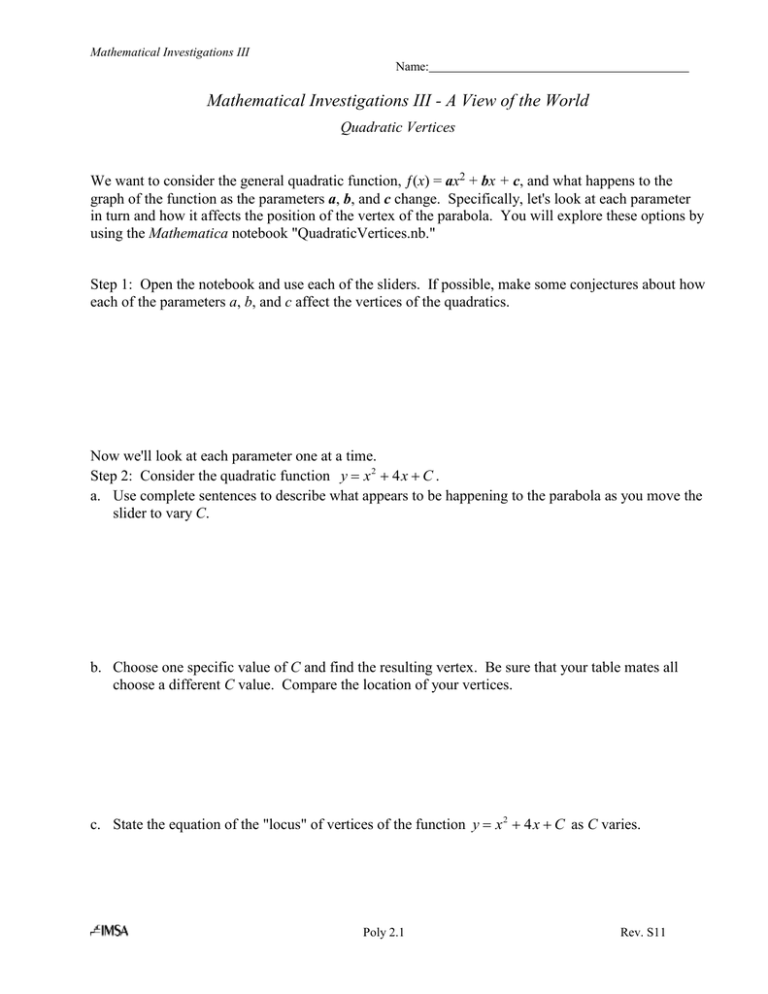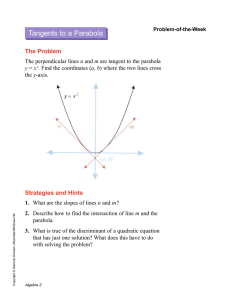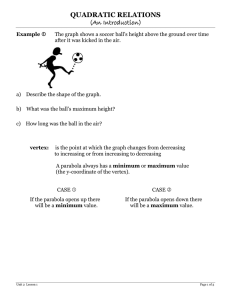Poly 2.3 Quadratic Parameters
advertisement

Mathematical Investigations III Name: Mathematical Investigations III - A View of the World Quadratic Vertices We want to consider the general quadratic function, ƒ(x) = ax2 + bx + c, and what happens to the graph of the function as the parameters a, b, and c change. Specifically, let's look at each parameter in turn and how it affects the position of the vertex of the parabola. You will explore these options by using the Mathematica notebook "QuadraticVertices.nb." Step 1: Open the notebook and use each of the sliders. If possible, make some conjectures about how each of the parameters a, b, and c affect the vertices of the quadratics. Now we'll look at each parameter one at a time. Step 2: Consider the quadratic function y x 2 4x C . a. Use complete sentences to describe what appears to be happening to the parabola as you move the slider to vary C. b. Choose one specific value of C and find the resulting vertex. Be sure that your table mates all choose a different C value. Compare the location of your vertices. c. State the equation of the "locus" of vertices of the function y x 2 4x C as C varies. Poly 2.1 Rev. S11 Mathematical Investigations III Name: Step 3: Consider the quadratic function y x 2 Bx 6 . a. Use complete sentences to describe what appears to be happening to the parabola as you move the slider to vary B. b. For two or more specific values of B, find the vertex of each resulting parabola. Again, be sure that your table mates are choosing different values of B. Now look at all (yours and theirs) of the coordinates for the vertices. What do you notice? c. Find the equation of the "locus" of vertices of the function y x 2 Bx 6 as B varies. Poly 2.2 Rev. S11 Mathematical Investigations III Name: Step 4: Consider the quadratic function y Ax 2 4x 6 . a. Use complete sentences to describe what appears to be happening to the parabola as you move the slider to vary A. b. For two or more specific values of A, find the vertex of each resulting parabola. Yet again, be sure that your table mates are choosing different values of A. Now look at all (yours and theirs) of the coordinates for the vertices. What do you notice? c. Find the equation of the "locus" of vertices of the function y Ax 2 4x 6 as A varies. Poly 2.3 Rev. S11





